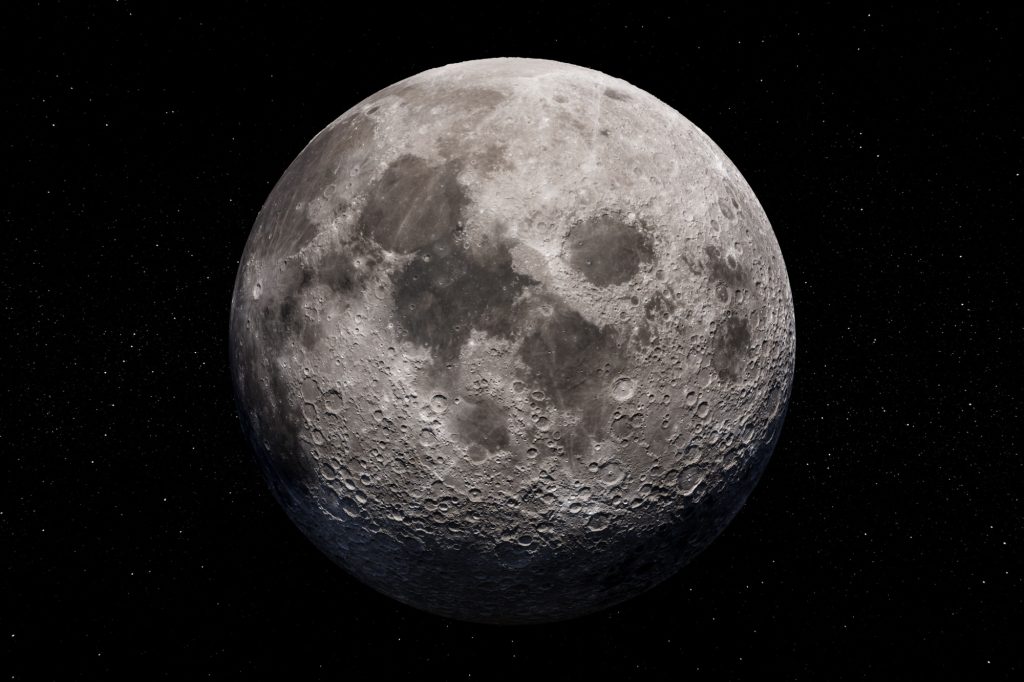Everybody’s seen the Moon hanging up there. But it’s a lot stranger than a simple, pale ball of rock. The more scientists poke at it, the weirder it gets, and here are ten remarkable facts about the Moon, backed by science (see the end). Which one of these surprises you the most?
Featured Image Credit: Shutterstock.
The Moon’s core is shaped like Earth’s, but much smaller
To start with, the Moon isn’t simply a solid hunk of rock. It has a tiny inner core that’s made of dense iron-like material. It’s only a few hundred miles wide & is wrapped in a liquid layer. Essentially, you can think about it as being like Earth’s core. But it’s shrunk down by quite a bit. How cool is that?
Some lunar spots are colder than Pluto
Most people know that Pluto’s freezing. But it turns out that parts of the Moon are even colder, as the bottoms of certain lunar craters barely creep above minus 390°F. That’s colder than some parts of deep space. These holes trap ice, and they don’t get a single ray of sunlight. Ever.
The Moon has a 500,000-mile-long sodium tail
The Moon has its own faint orange tail made of sodium atoms, which stretches about half a million miles into space. We can’t see it with our eyes. However, astronomers have cameras that catch the glow around the same time of the new moon. It’s a pretty incredible sight to behold.
Moonquakes can last nearly an hour
You probably know that the Moon doesn’t have earthquakes because, well, it’s not Earth. It has moonquakes instead. The seismometers on Apollo spacecraft have measured these quakes, and some of have gone on for almost an hour. This is because the Moon’s dry crust doesn’t dampen vibrations like Earth’s. As such, the tremors just bounce around for a long time.
Gravity on the Moon is lumpy and weird
Gravity works differently on different parts of the Moon. That means that spacecraft flying over certain spots will be tugged down harder than expected, and those spots are called “mascons.” This is short for mass concentrations. Essentially, they’re hidden gravity potholes & they came from giant asteroid impacts. These left behind heavy, dense layers underground.
The far side is built like a fortress
The far side of the Moon is the one we never see from Earth. It has a crust that’s much thicker than the side we know, and the difference between the two is like the difference between a paper plate & a brick wall. This is one of the main reasons why that side has a lot of rugged mountains, instead of smooth lava plains.
Lava erupted just two billion years ago
Not all Moon lava is as ancient as you might think. In 2020, China’s Chang’e-5 mission scooped up volcanic rock that turned out to be only 1.96 billion years old. That’s practically yesterday from a geologic timeframe. Somehow, the Moon was spewing out lava while dinosaurs were just starting to stir on Earth. That really puts stuff into perspective, doesn’t it?
The Moon once had a magnetic field stronger than Earth’s
The Moon’s surface is relatively quiet today. But long ago, the Moon had a magnetic field that was even stronger than Earth’s. Rocks brought back from Apollo missions show that the field may have been twice as strong as Earth’s. That field lasted for billions of years. It’s quite surprising, given how small the Moon is.
We actually see 59% of the surface
The idea that we only ever see half the Moon isn’t strictly true. The Moon wobbles a little as it orbits, meaning that we get sneak peeks around the edges. Eventually, we see around 59% of the whole lunar surface. It’s not a lot more than half. But it’s enough.
The Moon is slowly moving away from Earth
Scientists have conducted numerous experiments & found out that the Moon isn’t staying put. It drifts a tiny bit farther from Earth each year. It’s not a lot, just over an inch, but it confirms that our lunar neighbor is slowly slipping out of reach. Astronauts left mirrors up on the Moon. On Earth, we bounce lasers off them to measure the distance.
The following sources were consulted in the preparation of this article:
- The lunar solid inner core and the mantle overturn
- Diviner Lunar Radiometer Observations of Cold Traps in the Moon’s South Polar Region
- Long-Term Observations and Physical Processes in the Moon’s Extended Sodium Tail
- Effects of Lunar Near-Surface Geology on Moonquakes Ground Motion Amplification
- 3-D Density Structure of the Lunar Mascon Basins Revealed by a High-Efficient Gravity Inversion of the GRAIL Data
- The crust of the Moon as seen by GRAIL
- Age and composition of young basalts on the Moon, measured from samples returned by Chang’e-5
- Assessing lunar paleointensity variability during the 3.9 – 3.5 Ga high field epoch
- A two-billion-year history for the lunar dynamo
- The Lunar Laser Ranging Experiment: Accurate ranges have given a large improvement in the lunar orbit and new selenophysical information


